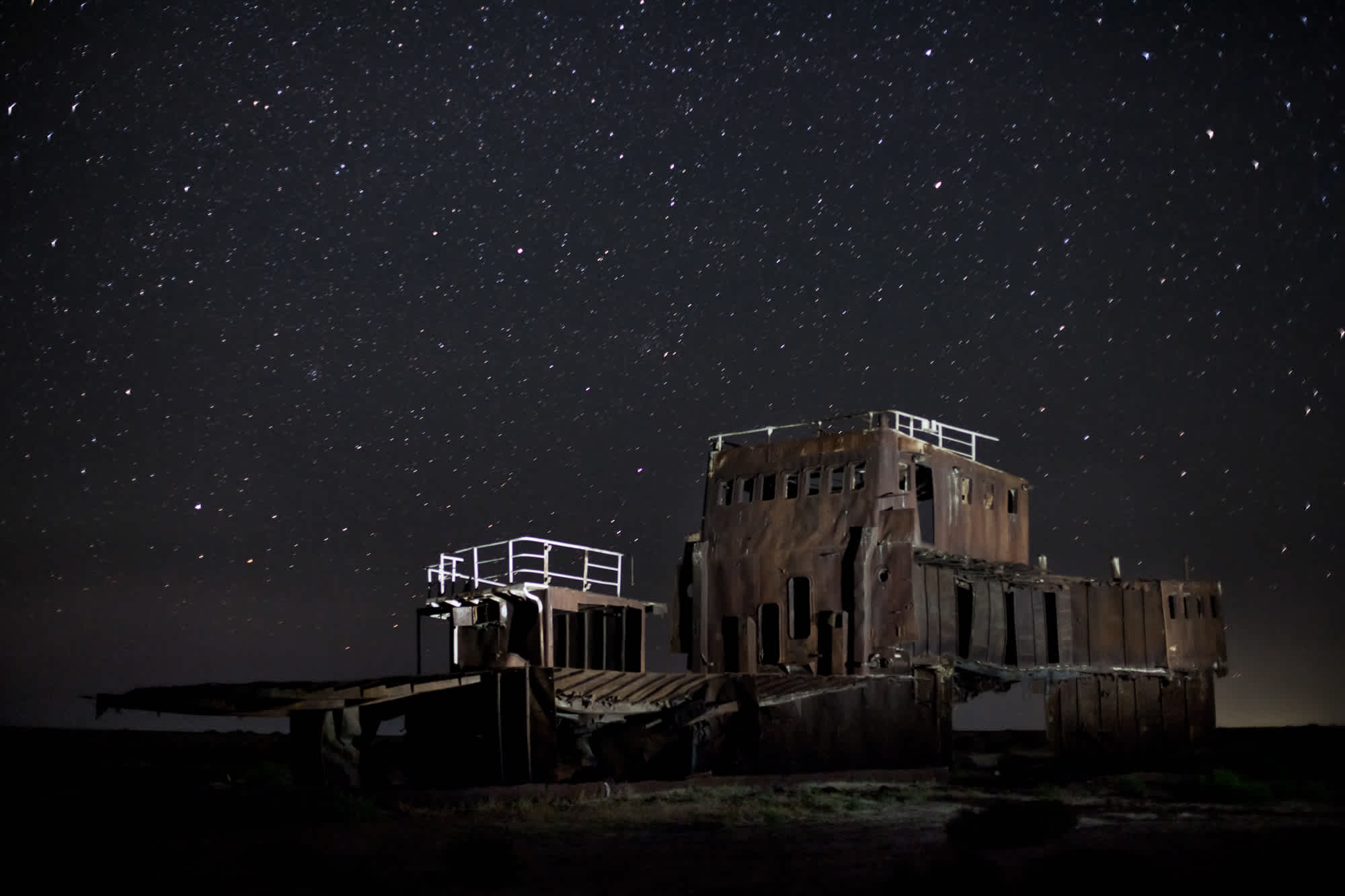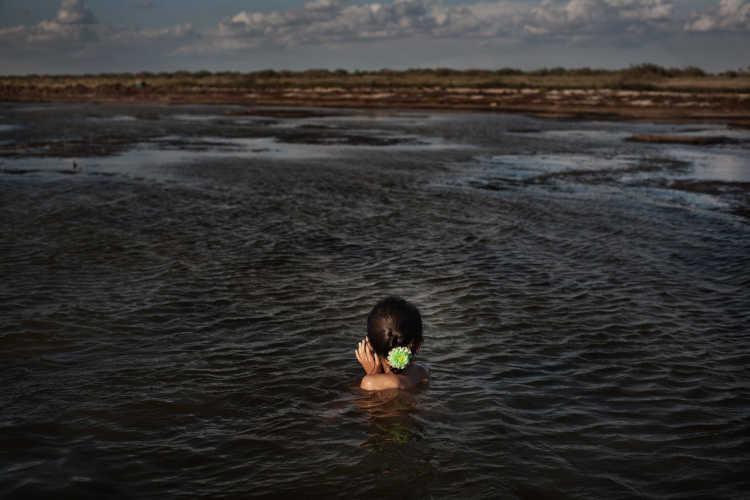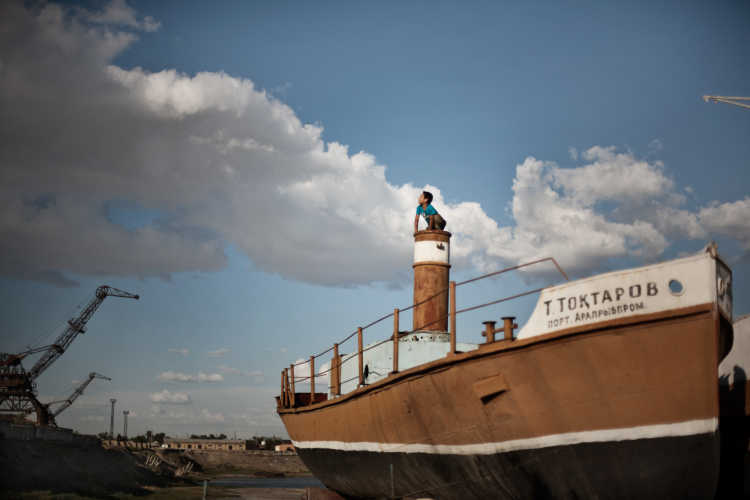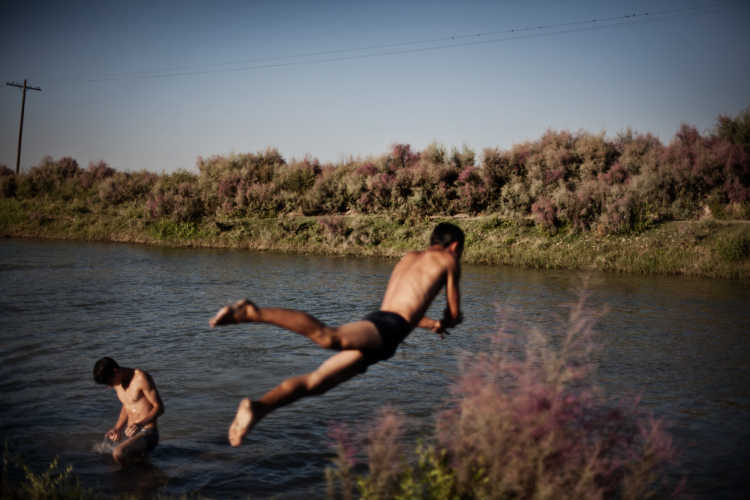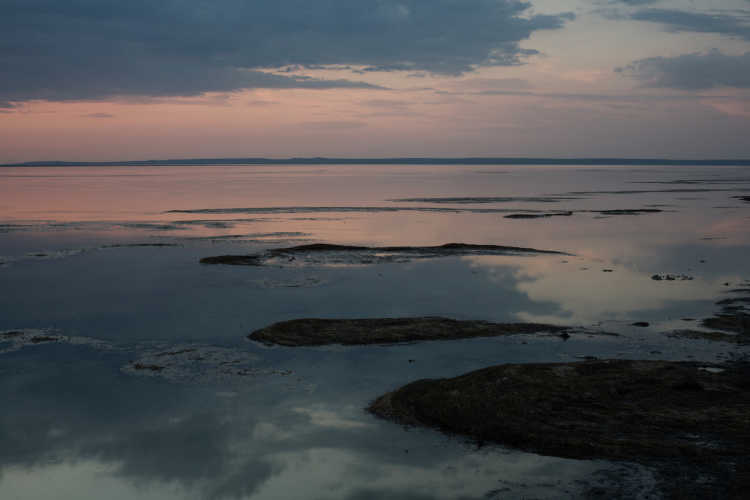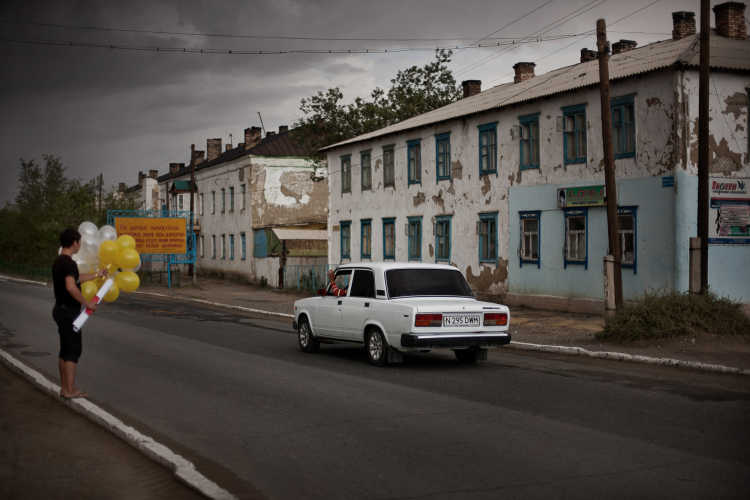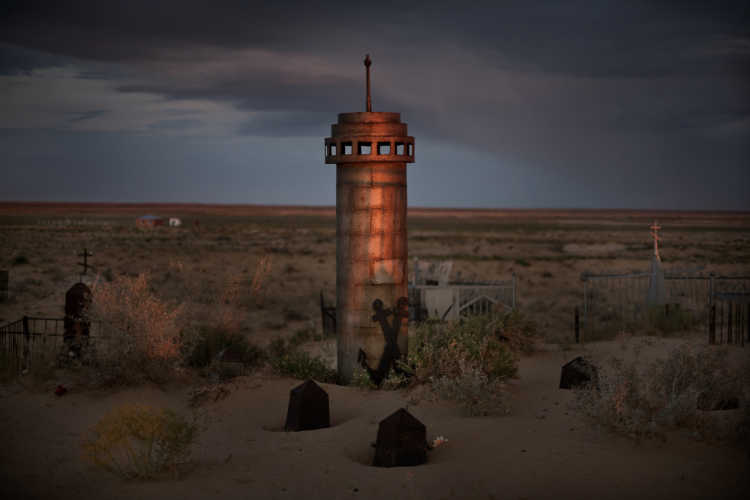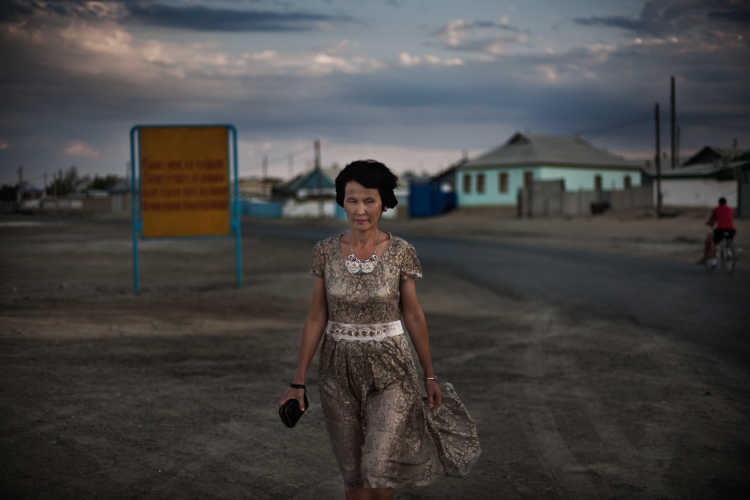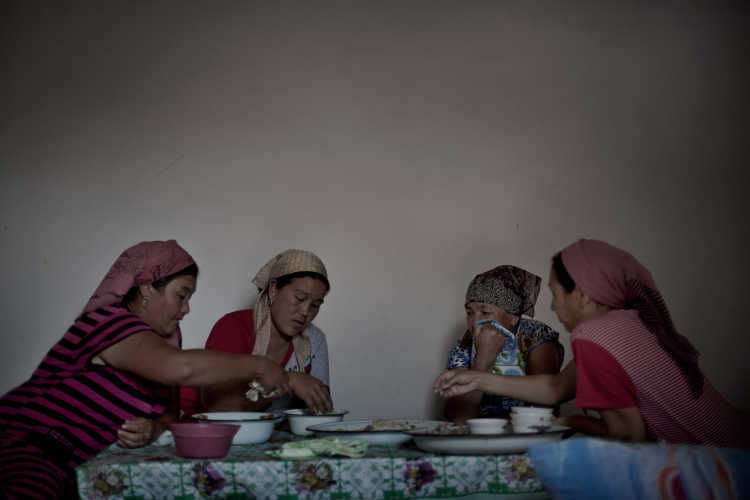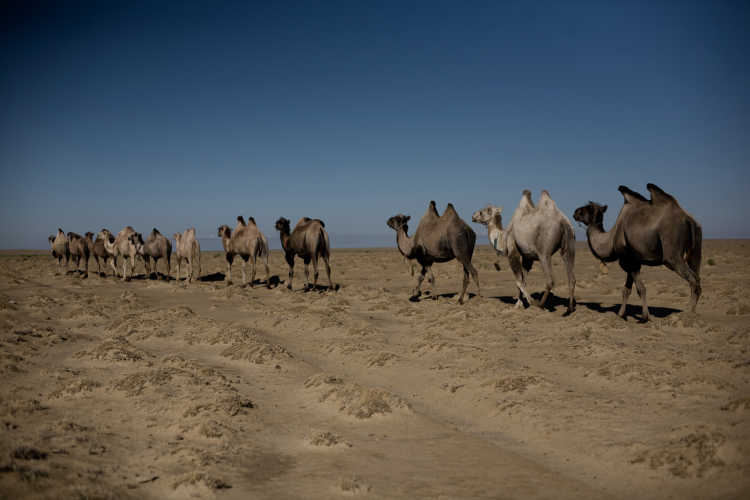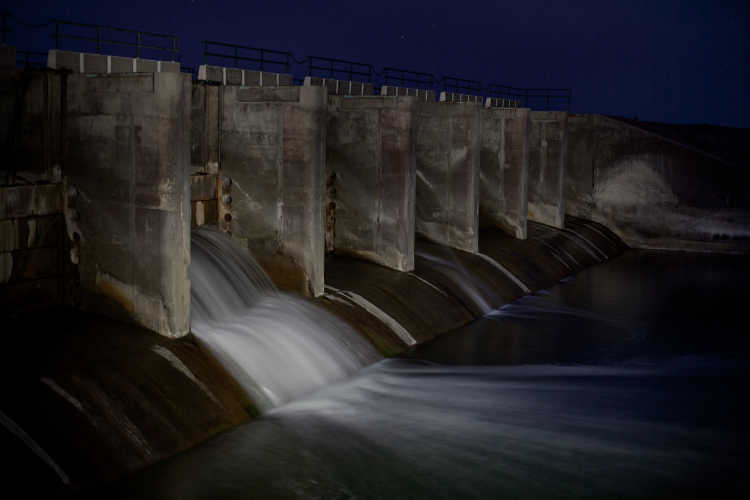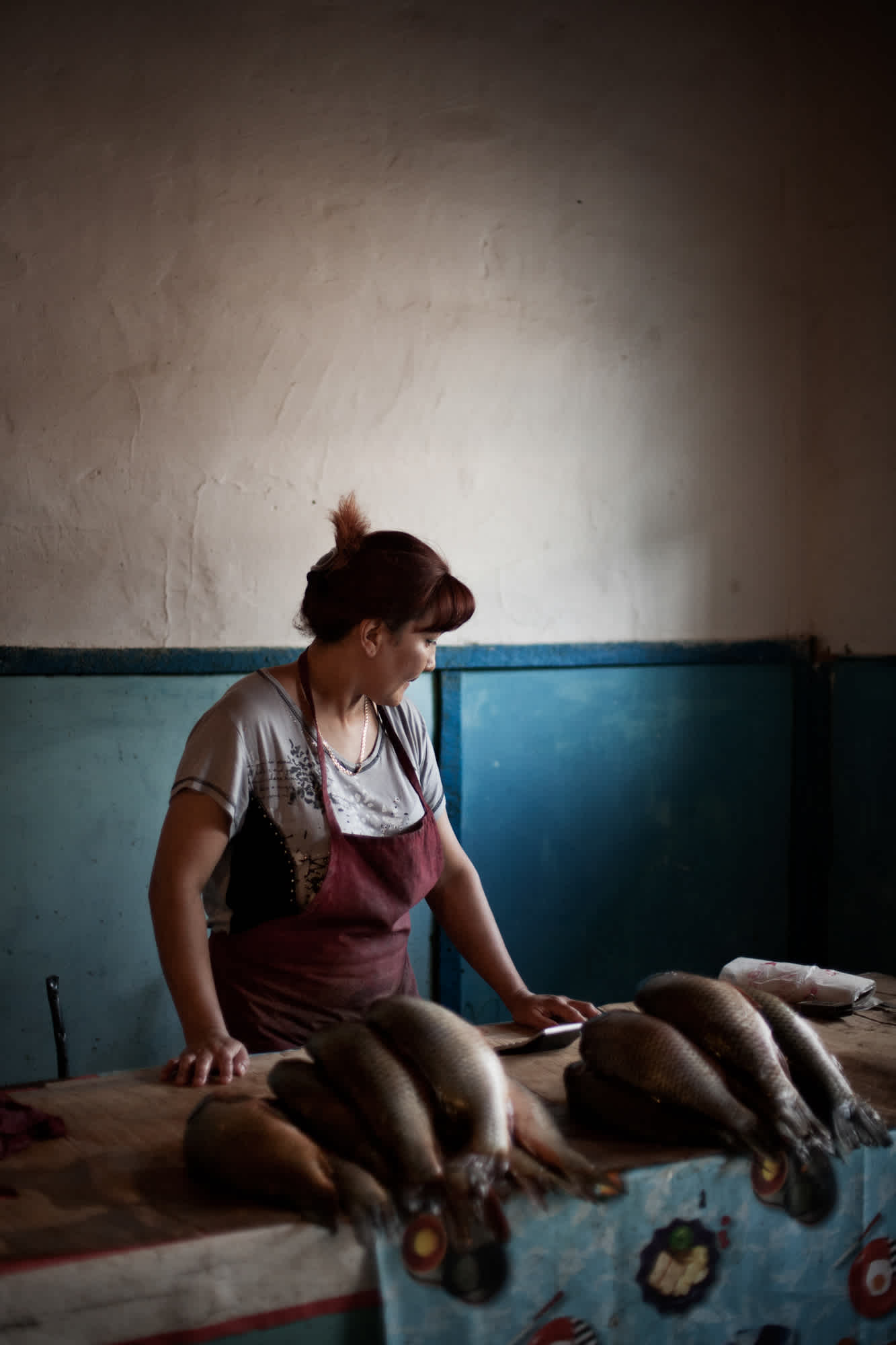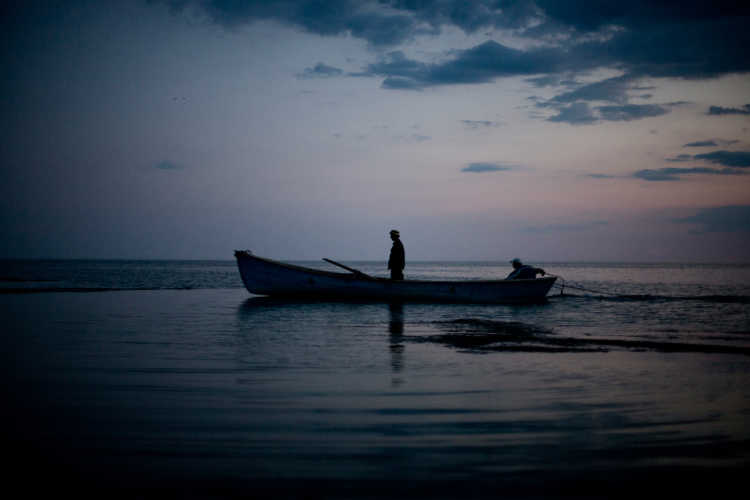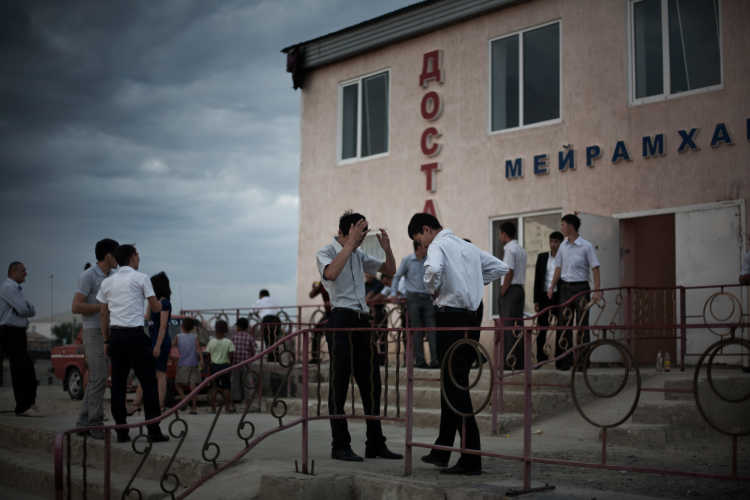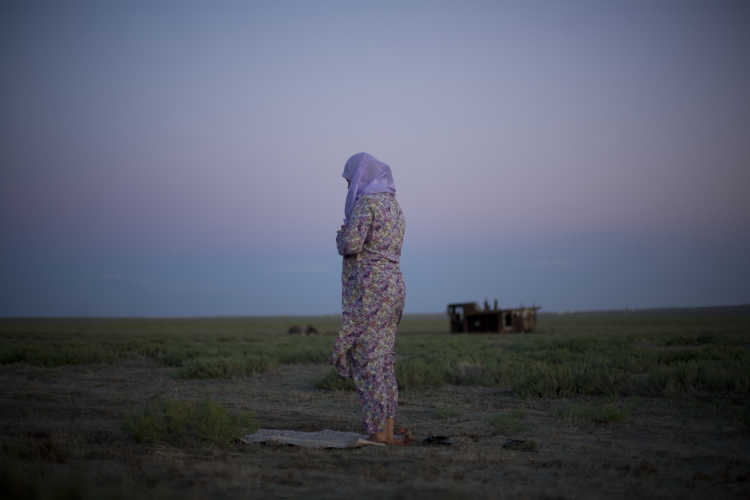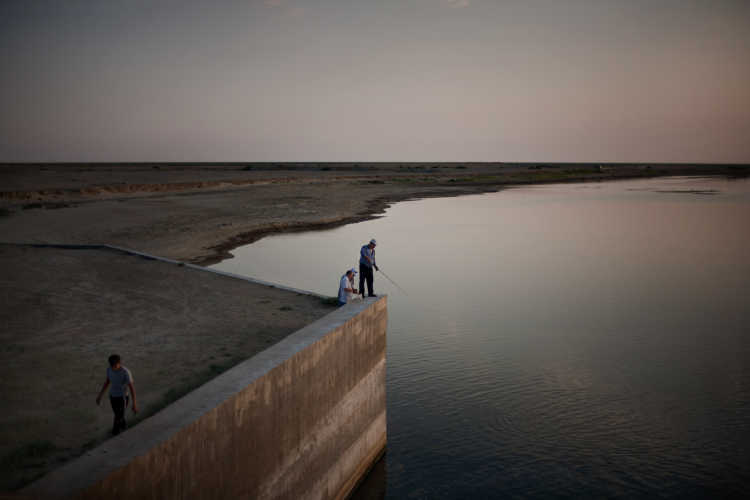Exhibitions
- Kazakhstan EmbassyRome, Italy, 2011
- B>Gallery 2011Rome, Italy
Publications
Description
Aralsk, once, a strategic port town, at the Northern tip of the Aral Sea, in Kazakhstan thrived on the trading of commodities between Russia and Central Asia at large. Although a dam has brought the shoreline to within 25 kilometers from what was once the Aralsk Harbor, one would never know it.
Camels graze around a pool of water crested with brown foam and ringed with garbage. From here the sea seems far from returned. Though brides still ride around in wedding cars in this traditional marriage town, there is something about Aralsk that has died. It is a beach town with no sea, a surreal endless expanse of sand. Women push their baby carriages through mounds of white grain sand; abandoned boats dot the harbor, half-submerged in shallow ponds. One can’t help but wonder how Aralsk will respond when and if the sea actually does return. More than a generation has grown up here in the arid desert; they have never known life on the water.
In the 1960s, the Syr Darya and the Amu Darya rivers were diverted by the Soviets to irrigate cotton plantations, depriving the Aral Sea of its two main tributaries, subsequently shrinking what was once one of the four largest lakes in the world. Water quickly turned to sand and what remained of the Aral was turned into a hyper-salinized pool of agricultural pesticides, killing off most remaining fish and surrounding wildlife as well. Health problems and unemployment pushed droves of people into neighboring cities and towns. In 2001, the World Bank together with the Kazakh government responded with the thirteen kilometer Dike Kokaral, an $86 million project, designed to raise the water level of the Northern Aral Sea by containing flow into the severely diminished South. Extirpated species of fish were reintroduced back, and a Danish NGO donated fishing nets to local villagers. Tactubek, a historic fishing village is beginning to come back to life with many families returning.
